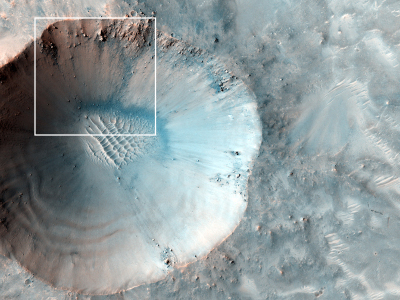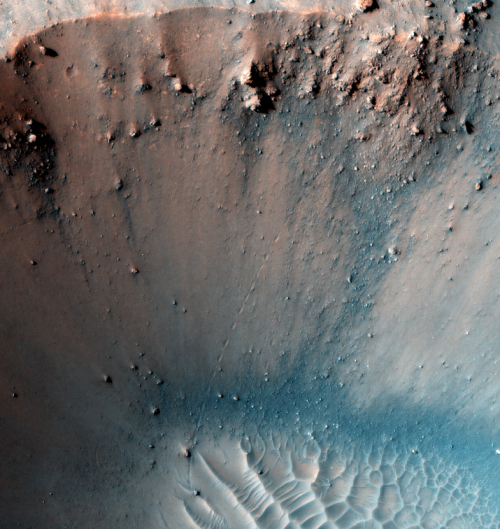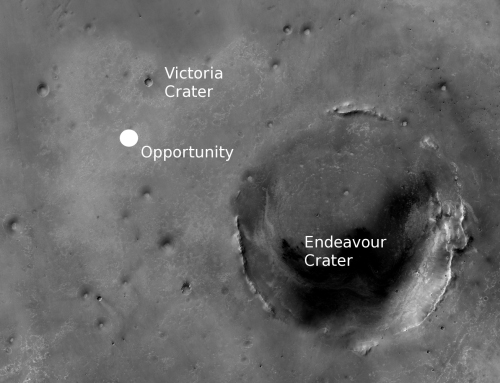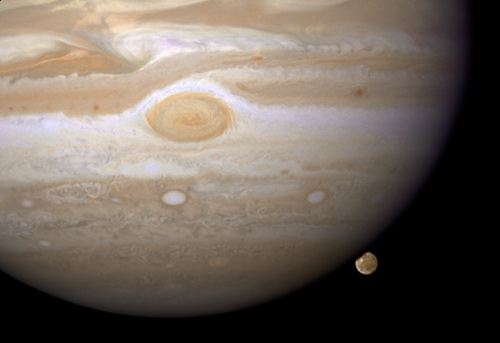 On the 10th day of Christmas my true love sent to me: 10 probes a-probing
On the 10th day of Christmas my true love sent to me: 10 probes a-probing
I may be firmly Earth-bound in terms of my own research, but I have a long standing fascination with the geology of other planets. Partly because it helps place our own planet’s geological quirks and history in a richer context, but mainly because seeing all of these alien worlds in all their weird glory is just darned cool. Fortunately for me, we are living through an extremely exciting period in space exploration: manned space flight might remain stranded in Low Earth Orbit, but robot probes are exploring our planetary neighbourhood in ever more exquisite detail – and are starting to explore planetary neighbourhoods beyond our own. Which of these probes am I most eagerly awaiting new data and images from?
- NASA’s Lunar Reconnaissanace Orbiter will spend 2010 scrutinising the Moon from low polar orbit. If you think that there may be nothing more to discover about our near-sister planet, think back to all that fuss about water last year; after a decade or three of relative neglect, I’d be surprised our renewed attention, with modern instruments, did not unveil some more surprises.
- A bit further away, the Mars Reconnaissanace Orbiter is now back online after computer worries last year led to it being left in ‘safe mode’ for an extended period. And if the MRO is online, that means HiRISE will go back to work, which means more images like this competing to become the next wallpaper on my desktop:


Bouncing boulder tracks! SourceIt is, of course, a little unfair to ignore the other five science instruments on the MRO – but I can’t help it.
- On the surface, the Spirit Rover may be stuck, possibly for good, but Opportunity continues to make progress towards Endeavour crater, although it still has some way to go. For both rovers, however, more than six years of roving is quite an achievement for missions originally slated to last only 90 Martian days.
- It was recently announced that the European Space Agency’s Venus Express mission will continue until the end of 2012. It is soldiering on with little fanfare compared to many other planetary missions, perhaps because it is more geared at observing the Venusian atmosphere than its surface, it has less access to pretty images to whet the public appetite whilst the more detailed science is being written up. But Venus is worth some attention: we have yet to really resolve the contradiction of a planet so like ours in terms of size, composition and orbit being so unlike it terms of its habitability. Understanding this conundrum better will equip us to better interpret the results of our search for ‘Earth-like’ planets around other stars.
- Which seems like a good time to mention Kepler, which is currently at the forefront of this search. There is a press conference tomorrow that will reveal the latest data. There were reports a couple of months ago that data analysis was being hampered by a (fixable) problem with noise in the electronics, which suggests that whatever discoveries they announce will not include definite detection of Earth-mass planets – but the year is young.
- Back in our own solar system, Cassini continues to explore Saturn, including its geologically interesting moons. The currently listed flyby schedule has 6 close passes of Titan listed for the first half of the year, the first one in happening in just over a week; these periodic snapshots will hopefully proviide more insight into the effects of the changing seasons on its hydrocarbon lakes.
- New Horizons will not reach Pluto until 2015, but 2010 has some signficance, as it marks the half-way points of the mission. I say points, because it seems there are a number of different half-way points to be commemorated, due to the vagaries of orbital mechanics and slingshot manoeuvres. The first actually fell just before the turn of the decade: after Dec 29th last year, it was closer to Pluto than is was to Earth. At the end of Feburary, it will be half the heliocentric distance to Pluto; in April, half as far from the Sun as Pluto will be at the time of the 2015 flyby; and in October, half the total flight time to Pluto will have elapsed. Only 5 more years until our first glimpse of a Kuiper Belt object. Will Pluto show some signs of geological activity in the time since its formation?
- The newly re-upgraded Hubble Space Telescope is of course spending a large chunk of it’s time peering towards the edges of the Universe. It may also be enlisted to attempt imaging more extra-solar planets. However, I’m also hoping that some time is allocated to looking at the planets not currently hosting robotic visitors, because the results are pretty cool when it does.
- Finally we musn’t forget our own pale blue dot: I’ll certainly be keeping an eye on the output from EOS-1 and Aqua, as packaged by NASA’s Earth Observatory, who periodically wow me with images both beautiful and informative, such as this recent shot of fringing coral reefs fringing an island in the Adaman Sea, that were lifted above sea level by the Boxing Day 2006 earthquake.

Adapted NASA image

Source: Hubblesite

Source: NASA Earth Observatory
All in all, there’s lots of geoplanetary excitement to look forward to in 2010.



Comments (2)